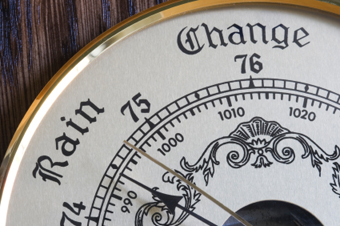 This past week, communities across North America celebrated Groundhog Day, the February 2 ?holiday? on which local groundhog celebrities predict whether or not there will be another six weeks of winter. Fun aside, weather predicting is serious business; it affects farming, commerce, urban development, and whether or not you’ll need a jacket today. This week’s links look at some of the truth and hype about weather forecasting?and show how you can do it on your own.
This past week, communities across North America celebrated Groundhog Day, the February 2 ?holiday? on which local groundhog celebrities predict whether or not there will be another six weeks of winter. Fun aside, weather predicting is serious business; it affects farming, commerce, urban development, and whether or not you’ll need a jacket today. This week’s links look at some of the truth and hype about weather forecasting?and show how you can do it on your own.
How accurate are Wiarton Willie, Punxsutawney Phil, and Shubenacadie Sam? According to the data, not very. But much weather lore is based on some scientific fact, and the Groundhog Day legend is no exception. Here, The Farmer’s Almanac gives some historical perspective on why the superstition may have originated?and why it may have been more accurate a hundred years ago.
If you rely on the 9 p.m. local news for your weather needs, you might be surprised to learn that their accuracy is usually quite poor for predictions more than a day or two out. This study, posted by Freakonomics co-author Stephen J. Dubner, will challenge your perceptions on weather forecasting.
Sometimes, shorter-term forecasting is as simple as looking out the window: today’s cloud cover usually offers clues to tomorrow’s weather. This photograph chart will help you predict whether to expect sun or rain. For more cloud photos, see here.
What about those weather proverbs, the folkloric sayings that for centuries were used to predict short- and long-term weather patterns? they’re not all true?but they’re not all false, either. This article explains why.


